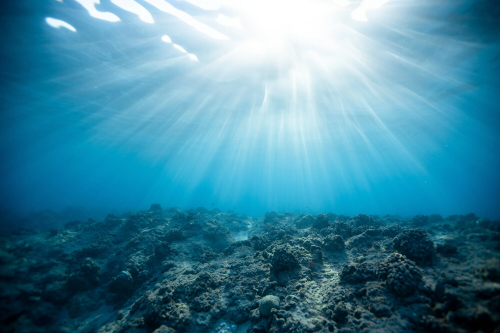‘Snot Palaces’ Reveal Undersea Creature Secrets
“鼻涕宫殿”揭示了海底生物的秘密
Mucus… is a miraculous substance. It’s in our noses, of course – but it also helps us swallow. And it lubricates our eyes, so we can blink. But it’s not just us. Mucus is ubiquitous in the oceans, too.
粘液是一种神奇的物质。当然,在我们的鼻子里就有粘液——同时,粘液也可以帮助我们吞咽。它润滑我们的眼睛,所以我们可以眨眼。但不仅仅是我们。粘液在海洋中也无处不在。
“Fish are covered in mucus. There are parrot fish that excrete mucus balloons around their head, presumably to protect them against predators and parasites.”
鱼全身都是粘液。有些鹦鹉鱼会在头部周围分泌粘液球,大概是为了保护自己免受捕食者和寄生虫的伤害。
Kakani Katija, a bioengineer at the Monterey Bay Aquarium Research Institute. As fascinating as parrot fish are, she’s interested in the mucus creations of another creature: called a larvacean.
蒙特雷湾水族馆研究所的生物工程师卡蒂加说。和鹦鹉鱼一样令人着迷的是,她对另一种幼虫的生物的粘液更感兴趣。
“Actually I wonder if I have one in my bag now…”
“实际上,我在想我包里现在有没有……”
(She means a 3-D printed one, not a real one).
(她指的是3-D打印的,而不是真的)
Katija says that larvaceans look a lot like tadpoles – and even the ones called “giant” larvaceans are only about four inches long. But they excrete spectacular mucus structures around them – shaped almost like a neck pillow you’d bring on a plane, but with ridges and baffles running through them. These “snot palaces”, as some people actually call them, help the animals filter ocean waters for food.
卡蒂加说,这种幼虫看起来很像蝌蚪——甚至那些被称为“巨型”幼虫也只有大约4英寸长。但它们的周围会分泌出“壮观”的粘液结构,形状就像你要带上飞机的颈枕,不过中间有脊状突起和障碍物。有些人称之为“鼻涕宫殿”,这些鼻涕宫殿帮助这些动物过滤海水以获取食物。

Katija’s team sent a robot diving in California’s Monterey Bay to observe those mucus mansions, as nobody appears to call them, in greater detail than ever before, by shooting laser light at the larvaceans. Those expeditions have allowed the researchers to create 3D models – which means you’ll soon be able to 3D print your own larvacean, too, if you like. And they plugged the models into a virtual reality environment. “So somebody can walk inside and through these filters.”
卡蒂亚的团队派了一个机器人潜入加州的蒙特雷湾,通过向幼虫发射激光,比更详细地观察这些粘液大厦(似乎没有人这样称呼它们)。这些探险使得研究人员能够创建3D模型——这意味着,很快也可以打印出你自己的“幼虫”。他们将这些模型放入虚拟现实环境中。“所以有人可以走进里面,并通过这些过滤器。”
The details, and lots of images, are in the journal Nature.
具体细节和大量图片发表在《自然》杂志上。
One application of the analysis is that engineers might someday derive inspiration from the mucus structures, to design more efficient filters. But there’s also an element of wonder to the work as well. “I’m just really excited that we have the capability to observe mucus in all these different forms in the deep sea.”
这种分析的一个应用是,有朝一日工程师们可能会从粘液结构中获得灵感,设计出更高效的过滤器。但这幅作品也有一种神奇的元素。“我真的很兴奋,我们有能力在深海中观察各种不同形式的黏液。”
英文、中文版本下载:http://www.yingyushijie.com/shop/source/detail/id/2328.html








